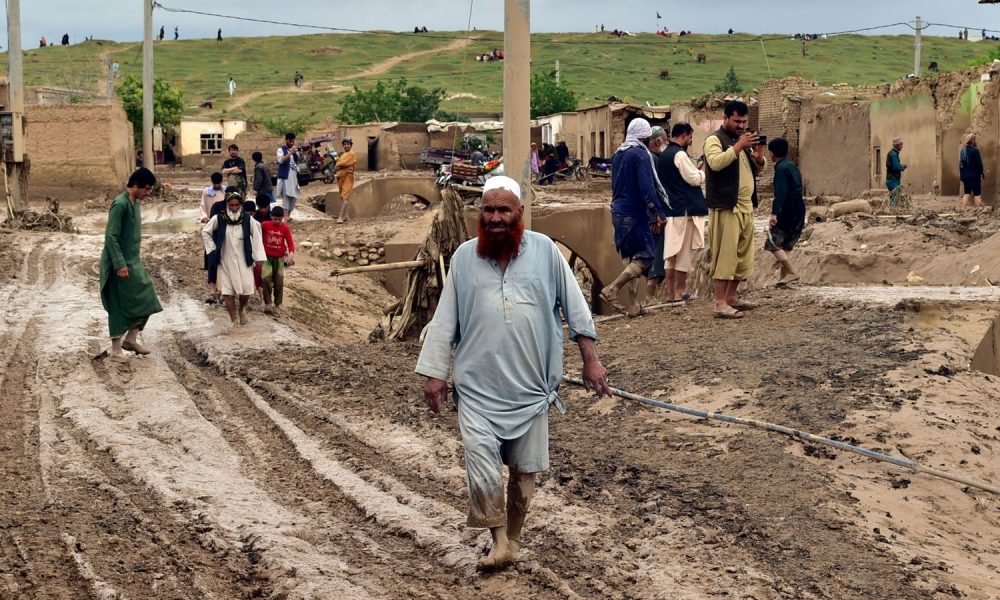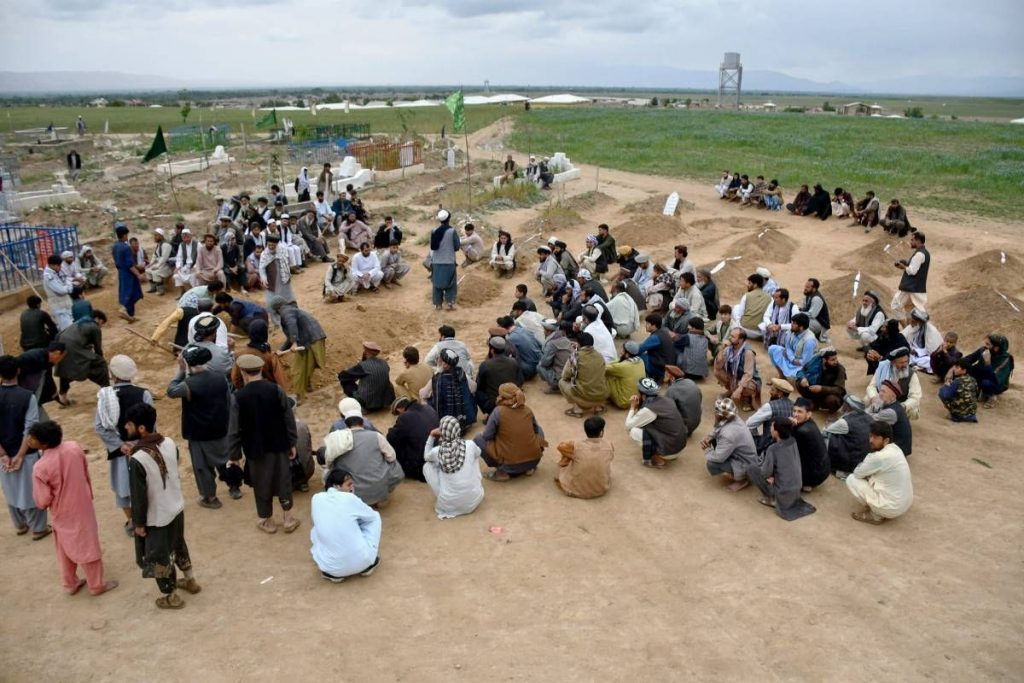Middle East
Floods in Afghanistan leave over 300 dead and survivors with no home

At least 315 people have lost their lives, thousands of homes were damaged and livestock wiped out during the recent flash floods caused by heavy rain in northern Afghanistan.
Taliban authorities announced that over 1,600 people were wounded and the villagers buried their dead and aid agencies scrambling to help the survivors. “The death toll has exceeded 300, and sadly, we expect this number to rise. The flood has also destroyed more than 2,000 homes,” the UN’s International Organization for Migration (IOM) said on X.
Most of the casualties were reported in the northern Baghlan province where the floods destroyed 3,000 homes, damaged farmland, and washed away livestock. People are in desperate need as the deadly flood also damaged health centers.
Taliban’s Deputy Prime Minister for Economic Affairs, Abdul Ghani Baradar had visited Baghlan and met with the victims. He called on the aid organizations and the traders to help the affected people and the residents are in a deep shock as they buried dozens of bodies. The most of the victims are from Nahrin district
We have not food and no drinking water
“We have no food, no drinking water and no shelter or blankets,” said Najibullah, who has lost nine members of his family. Three children are among the casualties.
The United Nations Office for the Coordination of Humanitarian Affairs (OCHA) said that heavy rainfall and flash floods affected 21 districts across Badakhshan, Baghlan, and Takhar provinces.
At least 73 people have lost their lives and 76 others were wounded in Baghlani Jadid district where 1,500 houses have been damaged or destroyed. “In Burka district, 70 deaths and 150 injuries have been confirmed, along with damage to 5,000 homes. Elsewhere, 13 deaths were reported across Dahnai Ghori, Guzargah Noor, Jelga, Narin and Puli Khumri districts where 1,612 homes were reportedly destroyed or damaged. A further 603 homes were reported as such in Khost and Tala wa Barfak districts,” it said in a statement.

Afghan relatives offer prayers during a burial ceremony, near the graves of victims who lost their lives following flash floods after heavy rainfall at a village in Baghlan-e-Markazi district of Baghlan province.
At least 24 people were reportedly killed across Chall, Ishkamish, Farkhar and Namak Ab districts in Takhar province, with 14 injured and a further seven missing. More than one hundred homes were also reportedly destroyed or damaged – the vast majority in Chall and Ishkamish districts.
Baghlan, Badakhshan and Takhar provinces are affected the most
In Badakhshan province, Teshkan district has been the most affected with 200 homes, 50 bridges and 30 electricity dams destroyed or damaged and 2,000 animals killed.
“With every beat of our hearts, we feel the deep sorrow that’s befallen Baghlan and all of Afghanistan. In this tragic time, our spirits reach out to embrace the families in mourning,” the International Labour Organization (ILIO) covering Afghanistan said in X.
UN Special Rapporteur Richard Bennett, said that “recent floods in Afghanistan including Baghlan which claimed many lives, are a stark reminder of Afghanistan’s vulnerability to the climate crisis and both immediate aid and long term planning by the Taliban and international actors are needed”.
Recent floods are stark reminder of Afghanistan’s vulnerability to the climate crisis
Indrika Ratwatte, deputy special representative of UNAMA for Afghanistan said that the country has remained amongst the world’s top 10 climate impacted countries while having no significant carbon footprint. “Climate shocks continue to ravage vulnerable communities. Urgent support for climate adaptation and mitigation for the people of Afghanistan is a critical need,” he added.
He furthered that Afghanistan Humanitarian Fund (AHF) will remain the main funding platform for providing life saving humanitarian assistance to millions. The international community needs to step up and support this critical lifeline for the people of Afghanistan, he added.
At the same time the World Health Organization’s Director-General, Tedros Adhanom Ghebreyesus said that WHO and its partners have deployed 17 mobile health teams to assist flood victims in Afghanistan.
In a post on X, Tedros emphasized that the recent floods resulted in more than 300 deaths and caused extensive damage to homes and health facilities.
“We are providing essential medicines and medical supplies to the affected communities,” he added.